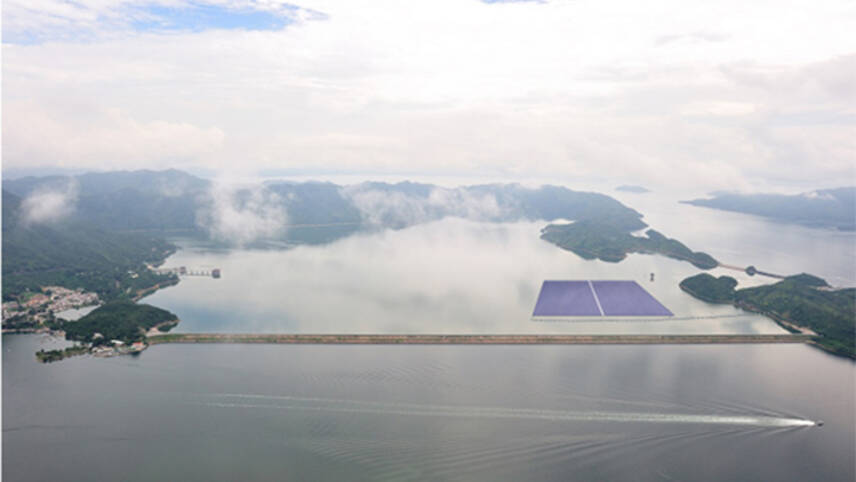This premium content is exclusive to edie Members.
To find out more about edie Membership, please click below.
If you are an existing member, login here

At a Glance
Who: The Government of the Hong Kong SAR, Binnies Hong Kong (part of the RSK Group)
What: Floating solar farm project at Plover Cove Reservoir
Where: Plover Cove Reservoir, Hong Kong
Why: To achieve carbon neutrality by 2050 and harness renewable energy
When: Construction set to commence in Q1 2025
The Challenge
Hong Kong faces the significant challenge of limited land resources, primarily allocated for housing. To achieve carbon neutrality by 2050, the government needed to find innovative ways to harness renewable energy and reduce its carbon footprint, calling for creative solutions to overcome space constraints while transitioning to sustainable energy sources.
The Solution
The introduction of a floating solar farm at Plover Cove Reservoir provides an ingenious solution to Hong Kong’s land scarcity challenge. Binnies Hong Kong, in collaboration with the Water Supplies Department, undertook a feasibility study from May 2019 to January 2021 to determine the optimal power capacity and design an anchoring system capable of withstanding typhoon wind and wave conditions.
The planned construction period for the project is approximately 18 months, commencing in Q1 2025.
How the Project Works
The initiative began with two pilot schemes of 100-kilowatt (kW) capacity each, installed at Plover Cove Reservoir and Shek Pik Reservoir in 2017. A further pilot system of 100 kW capacity was installed at Tai Lam Chung Reservoir in 2022. All three pilot schemes supply renewable energy to nearby WSD facilities, reducing the demand for electricity generated from fossil fuels, thereby saving costs and reducing the carbon footprint of the WSD’s operations.
Based on the success of these trials, plans went ahead for the new floating solar farm.
The floating solar farm at Plover Cove Reservoir leverages the expansive water surface area to house solar panels, which will generate renewable energy. The anchoring system and innovative design ensure the solar farm can withstand Hong Kong’s extreme weather conditions, including typhoons. The project also includes a floating wave-break system to attenuate wave height during severe storms.
The Results
The 5 megawatts (MW) floating solar farm at Plover Cove Reservoir is expected to generate the equivalent power required for 1800 households.
Additionally, the floating solar farm aims to conserve water resources by reducing evaporation from the covered water surface.
Business Benefits
This project offers several benefits, including contributing to the government’s carbon neutrality goal, demonstrating the potential of renewable energy technology, and providing a sustainable use for limited land resources.
Investment/Savings
While specific financial details are unavailable, the project’s value lies in its contribution to Hong Kong’s sustainability goals and its potential for future large-scale solar farm expansion.
Industry Context
The capacity of floating solar has experienced high growth over the last ten years, surging from 70 megawatt-peak (MWp) in 2015 to 1,300 MWp in 2020.
According to the BBC, projections suggest that the technology market is poised for continued expansion, with an anticipated annual growth rate of 43% over the next decade, eventually reaching a market value of £21.7bn by the year 2031.
© Faversham House Ltd 2024 edie news articles may be copied or forwarded for individual use only. No other reproduction or distribution is permitted without prior written consent.

